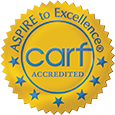There is no guarantee that an intervention will lead to treatment, but there are ways to make it more successful. Interventions are an excellent tool used to start the recovery process, but they need to be carefully planned out. If the intervention fails, you can’t just try again next week. This is your opportunity to bring key individuals together to convince your loved one to seek help for their drug or alcohol addiction. It’s important to do it to the best of your ability.
Let’s start by explaining what an intervention is and why it’s important. We will then go over the best strategies to follow when staging an intervention.
What is a Family Intervention?
An intervention is a carefully planned meeting. Close friends and family are invited to gather together and encourage their loved one to admit their problem and seek help. The reason why proper planning is essential is because interventions do not succeed off spontaneity and impulsivity. Everything is carefully laid out so that there are no accusations, blaming or victimizing. These things are not effective and can hurt the person’s chances of getting help.
Emotions run high in interventions, but these conversations should be mostly positive. This is not the time to bring up sensitive topics. Show your commitment in helping your addicted loved one get clean and sober. Help is available in the form of detox and counseling. And, let your loved one know that you are here to support them every step of the way.
To ensure that your intervention is positive and stays on track with your goal, it’s important to work with a trained professional, such as an addiction specialist or interventionist. This professional will add structure and guidance to your meeting so that it does not get out of hand.
What are the Parts of an Intervention?
Each intervention is unique based on the individual and their family members, but the process follows a similar pattern. Here is what you need to do to jumpstart an intervention for your relative.
- Get help from a professional interventionist, social worker or medical professional
- Form the intervention team, which should only include close family and friends
- Schedule a time and date for the intervention to take place
- Write an impact statement, or personal statement about how the addiction has affected you
- Gather information about addiction
- Practice and know what each person is going to say
- Hold the intervention and offer help to your loved one
- Set boundaries so the addict knows that things will change if they refuse help
- Reinforce the consequences if your loved one is not willing to seek rehab
How to Stage a Successful Intervention
There aren’t always clear reasons why some interventions work and others do not, but you can give yourself the best chances of being successful by planning ahead and including the right people in your meeting.
At Pax House Recovery, we have found that the best interventions share a few things in common. Let’s look at these factors in more detail so that you have a firm understanding of what to include in your intervention.
Choose your team wisely
Too often, we see interventions go bad because the wrong person was invited. Pick your team wisely. If someone is not on good terms with the addict, even if they are family, they should not be part of the intervention. Period. Only include people who have a good relationship with the addict and who you feel can influence their decision to accept help.
Another consideration is to keep your team small. It’s more powerful for a few people to come together and write impactful statements rather than a big group. Plus, this is less intimidating for your loved one.
Pick the right time
It’s important to choose a time when your family member is most likely to be sober. This is for your own safety, as people who are under the influence tend to respond in angry outbursts. Even if you don’t think your loved one will act violently, drugs and alcohol impair the brain and reduce a person’s ability to think clearly.
We understand that it’s not always possible to get an addict truly free from their poison, but do your best to pick the right time. In fact, we’ve found that some of the best interventions are held after a person has been charged with a crime like driving under the influence. They are usually sober and vulnerable at this time.
Choose a neutral spot
Location is another important detail that can make or break the intervention. It’s tempting to hold the intervention in a familiar spot, such as the family home, but avoid doing it. This location can be too comfortable for an addict, causing them to take control of the intervention. They may get up and use the bathroom or retreat to their bedroom. Plus, some personal spaces hold bad memories that can set the stage for an unsuccessful intervention.
Instead, choose a spot that is private yet neutral, such as a therapist’s office or church center. It’s much harder for the addict to storm off, and the space is not associated with negative memories. Talk to your interventionist who can help you find a suitable space.
Give attention to the order of speakers
You might not think that the order of speakers is important, but it is. By allowing the right people to speak at the right times, it can lead to the addict agreeing to treatment right then and there.
We recommend having a powerful person go first – someone that the addict has a close bond with. This could be a child, spouse or sibling. We also suggest having someone important speak close to the end, when the addict might be feeling most motivated to make a change.
Practice the intervention
You should hold a few rehearsals to ensure that the intervention is well-planned. It’s so easy for emotions to run high during interventions, and this is what causes these sessions to get out of hand. The best way to avoid this from happening is to carefully rehearse your script.
Rehearsing what you’re going to say is also important for delivering a clear and powerful message. To get through to an addict, there are certain words and phrases that you’ll want to avoid. By sharing your letter, your interventionist can give you pointers on better ways to say things.
Work on your body language
Not only are rehearsals a good time to practice what you’re going to say, but also a good time to practice your body language. Body language is more powerful than people realize, and you want your body to support your message. It’s imperative that you use warm, open body language.
Here is what we recommend focusing on:
- Don’t cross the arms and legs
- Make eye contact with the person you’re talking to
- Lean your shoulders forward to the person
- Talk quietly but firmly
- Avoid clenching your hands or fists
- Avoid “wearing” your emotions
Have a backup plan
Not all interventions go as planned. You must be ready for all of the potential outcomes of this intervention. Your loved one may storm out of the room and be unwilling to talk. Or, they may stay in the room and cry hysterically. It’s also possible that your loved one will deny their problem and make light of the situation. Stay flexible and be prepared for all possible outcomes.
Don’t give up – try again
There is no set number of conversations that need to happen before a person agrees to treatment. Some people need one, some need several. If your intervention fails, you can try again at a later date. In the meantime, the best thing you can do is follow through with your expectations. If your loved one is able to return to using drugs and alcohol without any consequences, they will have no reason to stop.
Pax House Recovery provides substance abuse treatment services that are deeply rooted in the 12 steps. If you plan on holding an intervention with a loved one, it’s important to have a treatment center lined up. Contact us today so that we can go over our treatment options and their costs.












